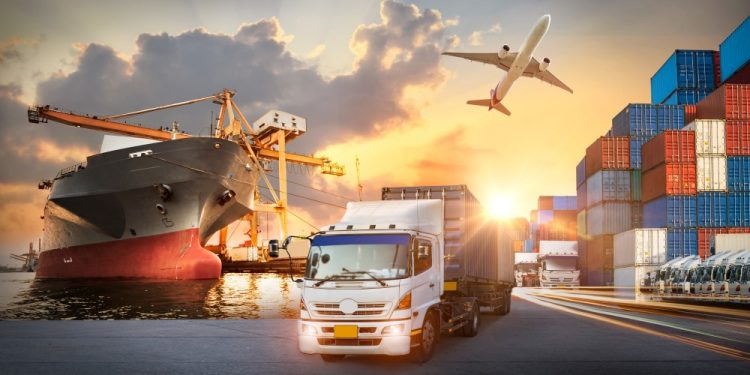International shipping is a complex process of moving freight over borders, accompanied by many rules and regulations. The complex world of international shipping can be broken down into general steps, encompassing; documentation, communications, transport, and goods handling. To get a product from a business to the consignee, the product must complete export and import haulage, warehousing, customs clearance, and freight. Many businesses hire companies in the global logistics industry to assist with their international shipping needs.
1. Export haulage
Export haulage transports a product from the shipping business to the international forwarder’s premises. The method of transportation depends on both the product being shipped and the shipper’s agreement with the consignee. A freight forwarder will likely do the export haulage if the consignee is responsible for the whole international shipping process. Otherwise, a local transportation company handles the export haulage. If the product consists of less than a whole container load (LCL), it is stored in the international forwarder’s warehouse until export customs are passed.
2. Clear export customs
Before a shipment can leave the country, it must clear all customs requirements. A certified customs professional prepares and files documentation to the customs office for the shipment. The shipping business can hire an international forwarder with certified customs agents or get a customs house broker appointed to their shipment. Once a shipment’s declaration is developed, and the customs clearance is performed, it is ready for export handling and air or sea freight.
3. Export handling
Export handling prepares the shipment for international travel transportation by boat or plane. This involves consolidating multiple shipments into one shipping container if necessary, transporting containers to ports, and getting containers loaded onto a ship or plane. The international forwarding company handles this process, but it is up to the shipper and consignee to decide which forwarding company to choose and who pays for it.
4. Ocean or air freight
The shipment is transported by sea or air, depending on the specific shipment requirements. Air freight is more expensive, but it is faster than ocean freight. Ocean freight is the most cost-effective option. While shipment requirements, like shipping time and order size, determine the mode of freight, the international forwarding company chooses the shipping line or air shipment company. The contract between the forwarding company and the international carriage company does not include the original shipper or consignee.
The shipper and consignee decide who pays the forwarding company for this service. The involved parties must also determine who assumes the financial risk and responsibility for the shipment. This is stated using International Commercial Terms (Incoterms) which must be included in shipping documents, such as sales contract, purchase order, proforma and commercial invoices, and the Bill of Lading.
5. Clear import customs
The import nation has its own laws and regulations for incoming shipments. The shipment will stay in a custom-bound destination warehouse until the qualified customs agent appointed to the shipment files the necessary documentation. Similar to export customs, the agent submits a declaration and fulfills any import duties to clear import customs. The agent is appointed by the freight forwarding company or the original shipper.
6. Import handling
Import handling is the movement of goods from the ship or plane to the destination warehouse. Similar to export handling, it involves unloading containers, transporting them from a dock to a warehouse, unstuffing the container, and preparing the shipment for the consignee. The freight forwarder coordinates and pays for the import handling, and then the price is passed on to the shipper or consignee.
7. Import haulage
The final step in the international transport supply chain occurs when the shipment cargo leaves the destination warehouse for the consignee’s collection. During this part of the transportation process, either the freight forwarder delivers the shipment or hires a local transportation company to haul it via rail, truck, or both. Once the shipment arrives at the consignee’s location, the responsibility shifts to the consignee. This is the end of the international supply chain.















